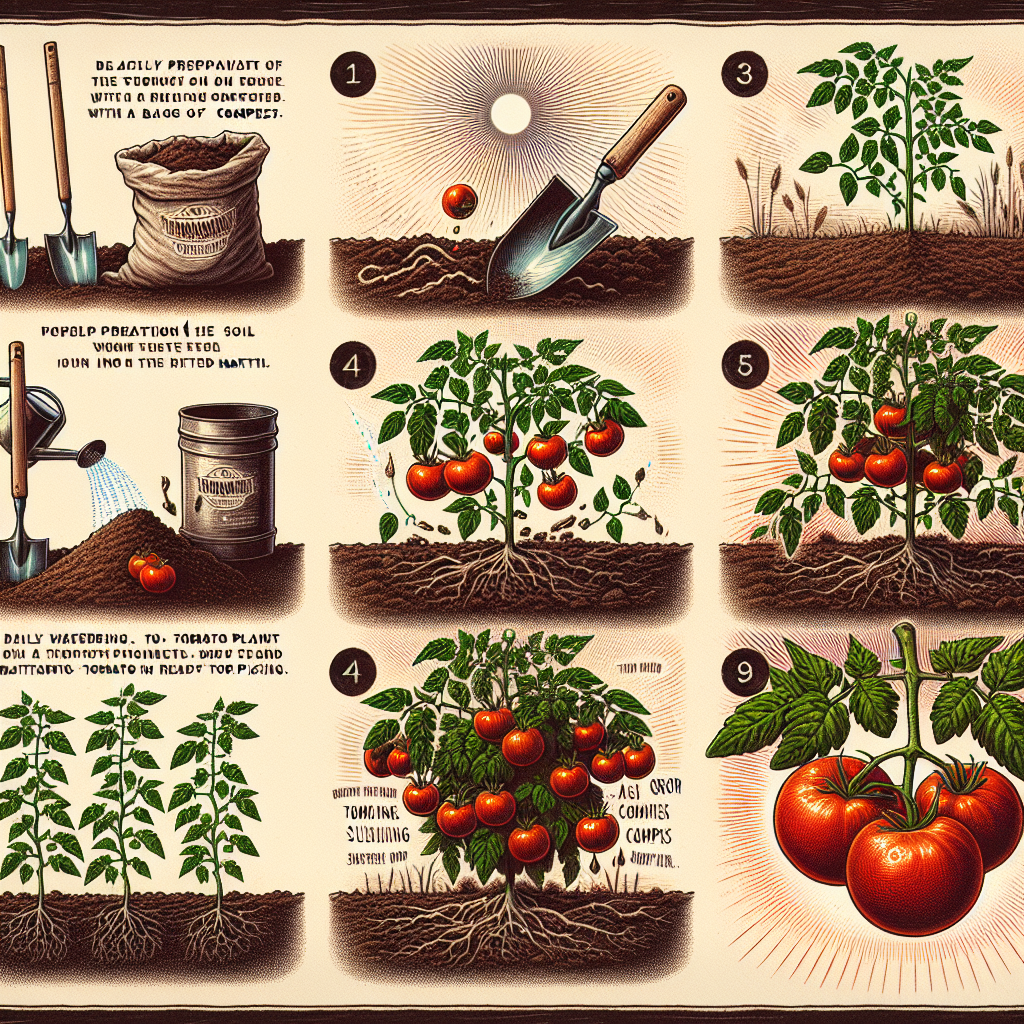
How to plant tomatoes outside
How to Successfully Plant Tomatoes Outside
If you're looking to grow your own tomatoes, you're in for a treat. Fresh, homegrown tomatoes add flavor to any dish and come with the satisfaction of having nurtured them yourself. However, planting tomatoes outside requires careful consideration of timing, location, and care. This article will guide you through the essential steps to create an ideal environment for your tomato plants.
Understanding Planting Time
One of the first details to consider when learning how to plant tomatoes outside is the timing. Tomatoes thrive in warm conditions, so understanding your local climate will help determine the optimal time for planting.
- Frost Date: Before you can plant, know your last frost date. This will vary depending on your location. Typically, tomatoes can be planted after the last frost has passed and the soil temperature is at least 60°F (15°C).
- Growing Season: Tomatoes require a growing season of at least 70-90 days. Ensure your planting dates align with this timeline.
Choosing the Right Location
Once you've determined when to plant your tomatoes, the next step is deciding where to plant them.
- Sunlight: Tomatoes thrive in full sunlight, requiring at least 6 to 8 hours of direct sunlight daily. A south-facing garden bed is typically ideal.
- Soil Quality: Well-draining soil enriched with plenty of organic matter is crucial. Perform a soil test to assess pH levels and nutrient content, aiming for a pH between 6.0 and 6.8.
- Accessibility: Consider ease of watering and maintenance in your garden design.
Preparing the Soil
Preparing the soil is a critical step in successfully growing tomatoes. Here’s how to ensure your soil is ready to nurture healthy plants.
- Clear the area: Remove any weeds, rocks, or debris from the garden bed.
- Amend the soil: Incorporate organic materials such as compost or well-rotted manure to improve soil structure and fertility.
- Turn the Soil: Break up compacted soil using a shovel or tiller to a depth of about 12 inches.
- Level the Area: Rake the area to create a smooth and even surface.
Choosing Tomato Varieties
There are several varieties of tomatoes, and selecting the right one for your climate and culinary preferences is key.
- Determinate Varieties: These types are bushy, growing to a certain height and then stopping, making them ideal for container planting or small gardens.
- Indeterminate Varieties: These plants continue to grow throughout the season. They require staking or cages to support their growth habit.
Planting the Tomatoes
Now that you're ready, it's time to actually plant the tomatoes. Here are detailed steps for the process:
- Dig Holes: Dig holes that are about twice as wide and deep as the root ball of your tomato plants.
- Spacing: Space your tomato plants 18-24 inches apart to allow for adequate airflow and growth.
- Transplanting: If you're starting with seedlings, gently remove them from their containers and position them in the holes. Plant them deeper than they were in their pots, up to the first set of true leaves.
- Watering: After planting, water the plants thoroughly, ensuring moisture reaches the roots.
Support Structures
Supporting your tomato plants is crucial for promoting healthy growth and maximizing yield.
- Cages: Tomato cages can provide sturdy support for both determinate and indeterminate varieties.
- Stakes: For indeterminate tomatoes, drive stakes into the ground next to the plants for upright support.
Fertilizing Your Tomato Plants
Proper nutrition is vital for the healthy development of tomato plants. Here are key points to consider:
- Type of Fertilizer: Choose a balanced fertilizer, such as a 10-10-10 or one specifically formulated for tomatoes.
- Application: Apply fertilizer at planting time and additional feedings every 4-6 weeks during the growing season.
- Organic Options: Use organic fertilizers like bone meal or fish emulsion for sustainable gardening.
Watering: The Key to Healthy Plants
Watering is a pivotal aspect of achieving healthy tomato plants. Here’s what you need to know:
- Consistency: Tomatoes prefer consistent moisture, so aim to water at least once a week, especially during dry spells.
- Deep Watering: Water deeply to encourage roots to grow further into the soil, which helps the plant sustain itself during droughts.
Managing Pests and Diseases
Tomato plants are susceptible to a variety of pests and diseases. Here are some strategies to keep them healthy:
- Regular Inspection: Check for common pests such as aphids and tomato hornworms regularly.
- Companion Planting: Grow marigolds or basil nearby to help deter pests.
- Disease Management: Rotate crops annually and use resistant varieties to combat diseases like blight.
Harvesting Your Tomatoes
Once your tomato plants have flourished, it's time for the reward: the harvest. Here’s how to know when your tomatoes are ready:
- Color: Tomatoes should be fully colored (red, yellow, or purple depending on the variety) and firm but slightly yielding to gentle pressure.
- Size: Observe the size indicated for the specific variety of tomato. They should reach maturity within the expected timeframe.
"The best time to plant a tree was 20 years ago. The second best time is now." – Chinese Proverb
Conclusion
By following these guidelines on how to plant tomatoes outside, you'll be well on your way to enjoying a bountiful harvest of delicious, homegrown tomatoes. Remember, the process involves preparation, care, and patience. Happy gardening!
By Guest, Published on September 17th, 2024